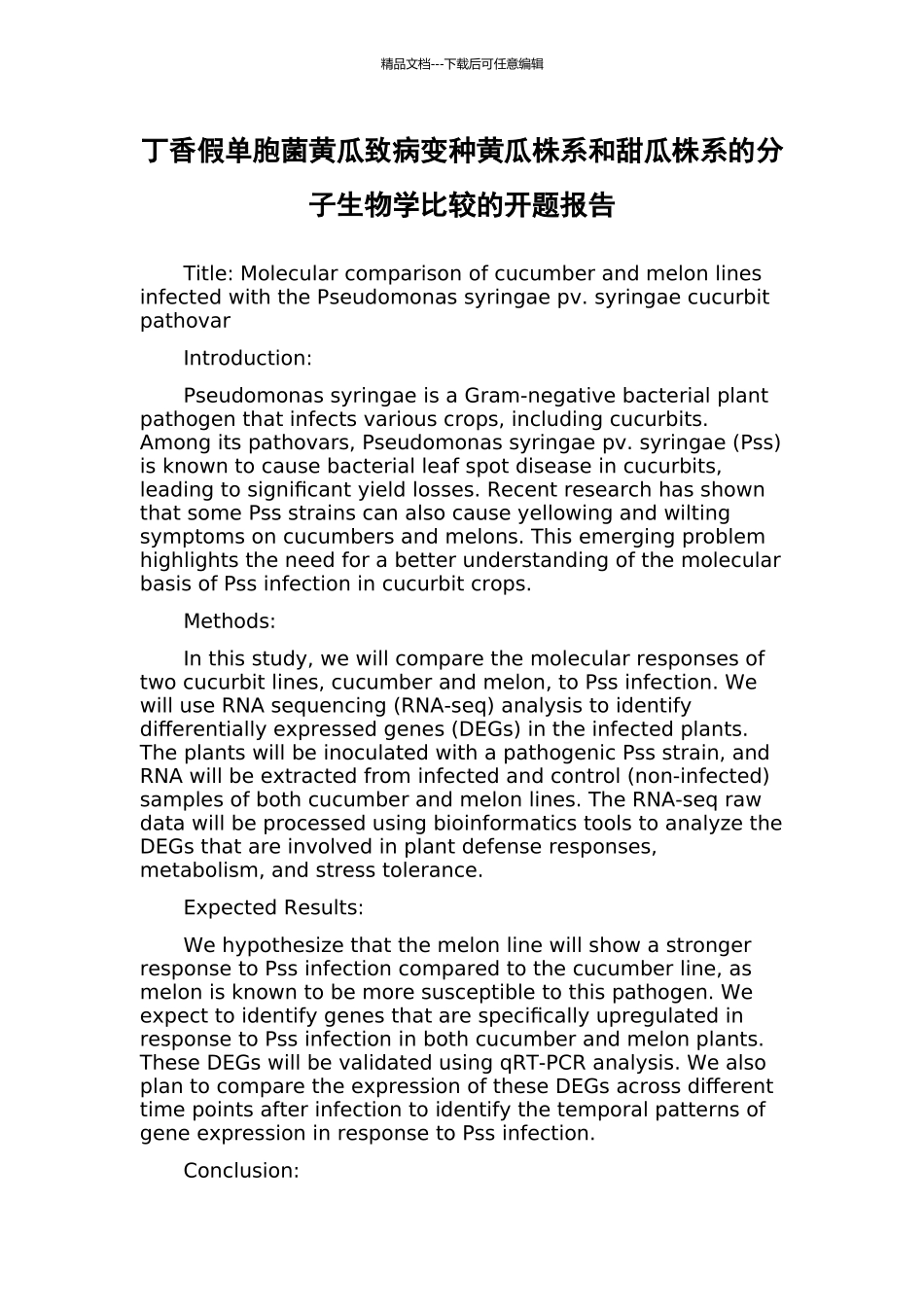精品文档---下载后可任意编辑丁香假单胞菌黄瓜致病变种黄瓜株系和甜瓜株系的分子生物学比较的开题报告Title: Molecular comparison of cucumber and melon lines infected with the Pseudomonas syringae pv. syringae cucurbit pathovarIntroduction:Pseudomonas syringae is a Gram-negative bacterial plant pathogen that infects various crops, including cucurbits. Among its pathovars, Pseudomonas syringae pv. syringae (Pss) is known to cause bacterial leaf spot disease in cucurbits, leading to significant yield losses. Recent research has shown that some Pss strains can also cause yellowing and wilting symptoms on cucumbers and melons. This emerging problem highlights the need for a better understanding of the molecular basis of Pss infection in cucurbit crops.Methods:In this study, we will compare the molecular responses of two cucurbit lines, cucumber and melon, to Pss infection. We will use RNA sequencing (RNA-seq) analysis to identify differentially expressed genes (DEGs) in the infected plants. The plants will be inoculated with a pathogenic Pss strain, and RNA will be extracted from infected and control (non-infected) samples of both cucumber and melon lines. The RNA-seq raw data will be processed using bioinformatics tools to analyze the DEGs that are involved in plant defense responses, metabolism, and stress tolerance.Expected Results:We hypothesize that the melon line will show a stronger response to Pss infection compared to the cucumber line, as melon is known to be more susceptible to this pathogen. We expect to identify genes that are specifically upregulated in response to Pss infection in both cucumber and melon plants. These DEGs will be validated using qRT-PCR analysis. We also plan to compare the expression of these DEGs across different time points after infection to identify the temporal patterns of gene expression in response to Pss infection.Conclusion:精品文档---下载后可任意编辑This study aims to provide insights into the molecular mechanisms of Pss infection in cucurbits by comparing the responses of two different lines, cucumber and melon. The results of this study will help to identify key genes and pathways involved in cucurbit-Pss interactions, which can be used to develop more effective strategies for disease control.

